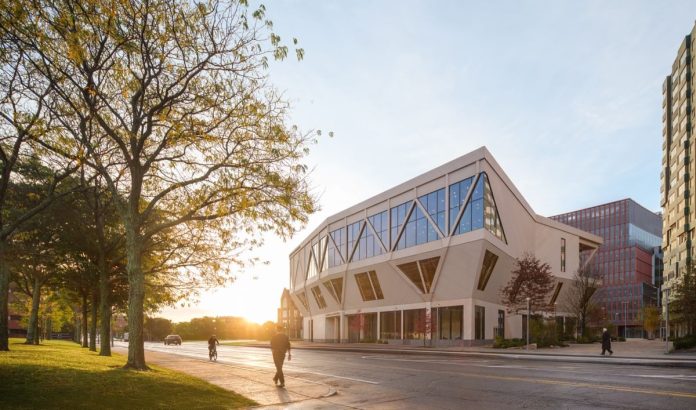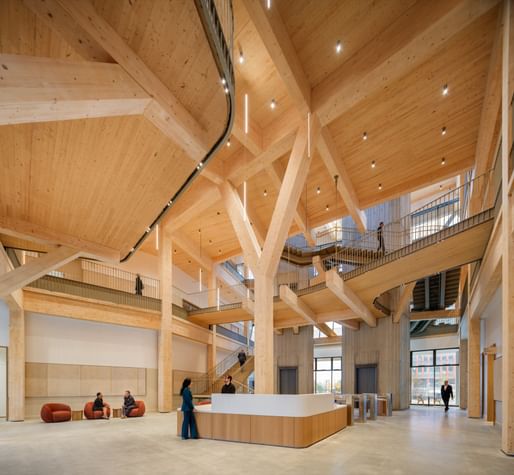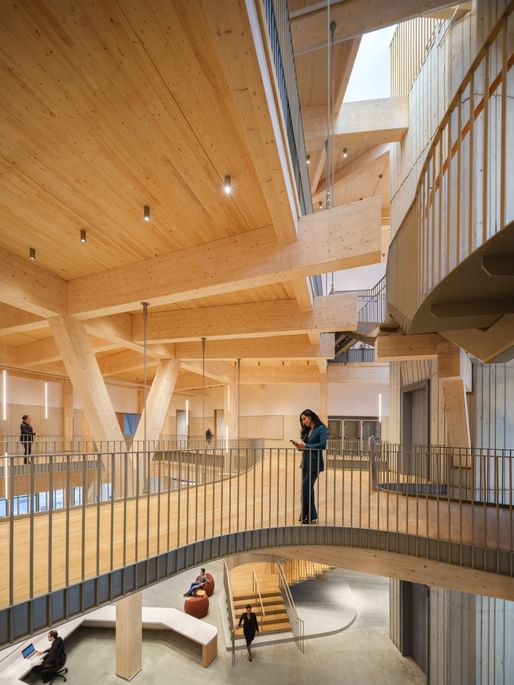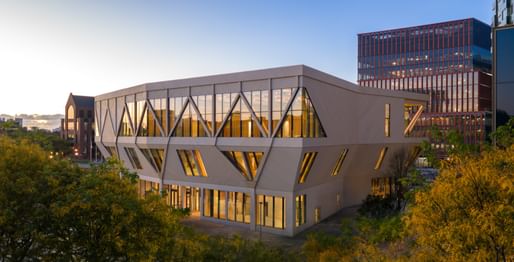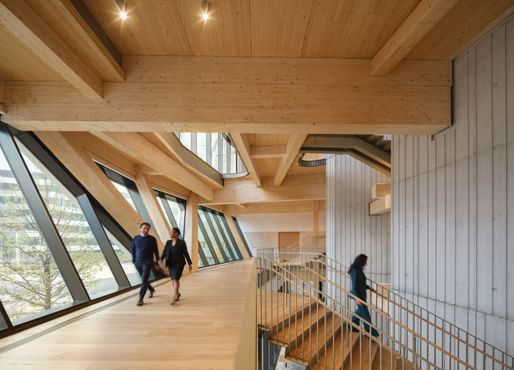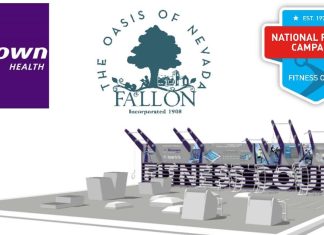anchor
Studio Gang has completed the David Rubenstein Treehouse at Harvard University, the institution’s first mass timber building. Part of Harvard’s new Enterprise Research Campus in Allston, Boston, the 55,000-square-foot facility is designed to provide flexible event and meeting spaces.

According to the design team, the scheme’s mass timber structure reduces embodied carbon by 55% compared to conventional materials. The building incorporates responsibly sourced wood, low-carbon concrete using recycled glass, and avoids harmful chemicals such as PFAS in its finishes and furnishings. The design targets Living Building Challenge Core and Materials Petal Certifications, and aligns with Harvard’s Healthier Building Academy standards.
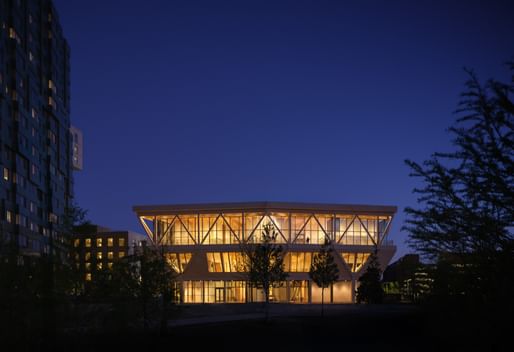
The design of the scheme takes inspiration from typical treehouses. A central, skylit stair evokes the experience of climbing into a tree canopy, while timber columns branch outward on the facade to support a cantilevered upper level. The Canopy Hall, the main interior gathering space, opens to an outdoor terrace with views over Boston. Each elevation is shaped to connect with its surroundings, with north and south facades inviting entry and east and west facades creating open pedestrian corridors.
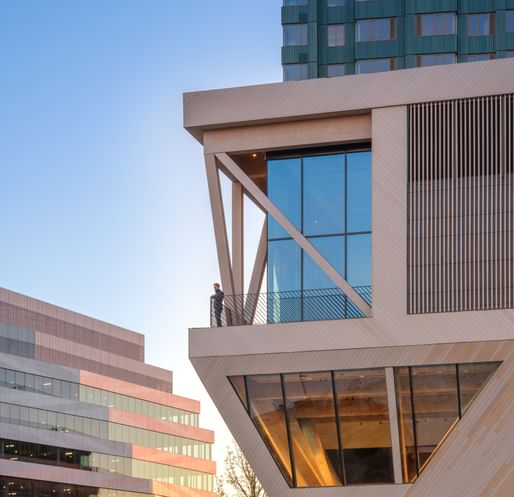
Energy performance strategies include rooftop solar panels, natural daylighting, and a raised-floor conditioning system. The building operates without on-site fossil fuel combustion and is linked to Harvard’s District Energy Facility for heating, cooling, and electricity. Surrounding bioswales and landscaped areas promote biodiversity while managing and reusing rainwater, with landscape architecture led by SCAPE.
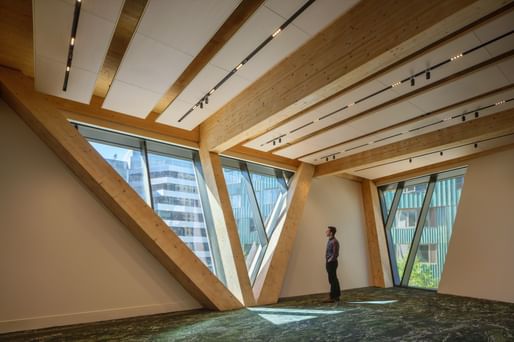
“As a Harvard alumna and faculty member, it’s so rewarding to have the opportunity to help define a new chapter for Harvard’s campus, “said Jeanne Gang about the scheme. “The Rubenstein Treehouse is a building that opens itself up, welcomes all people, and serves as a visual and programmatic anchor to the ERC. Its exposed mass timber structure demonstrates Harvard’s commitment to a more sustainable future.”



